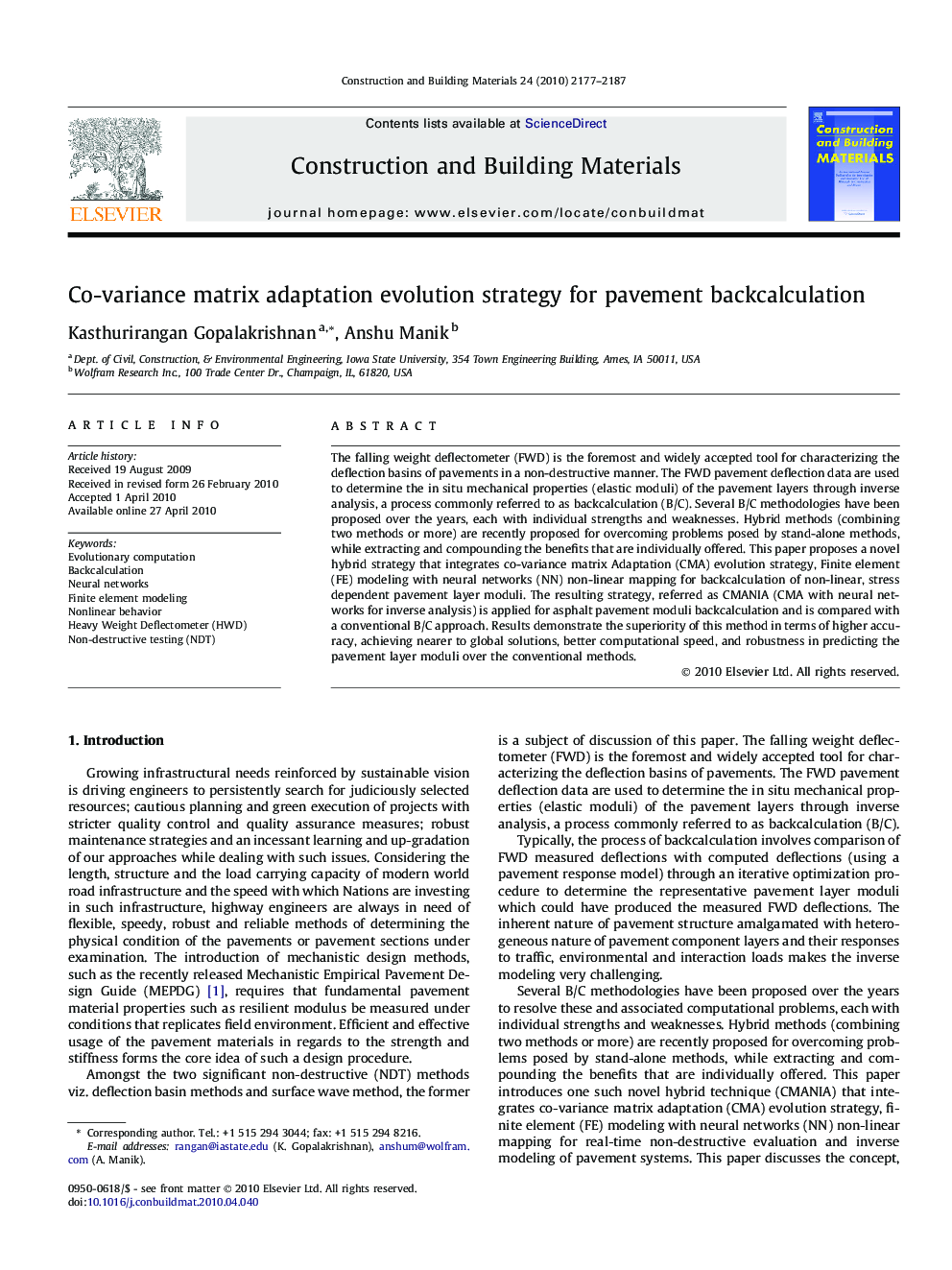| Article ID | Journal | Published Year | Pages | File Type |
|---|---|---|---|---|
| 259883 | Construction and Building Materials | 2010 | 11 Pages |
The falling weight deflectometer (FWD) is the foremost and widely accepted tool for characterizing the deflection basins of pavements in a non-destructive manner. The FWD pavement deflection data are used to determine the in situ mechanical properties (elastic moduli) of the pavement layers through inverse analysis, a process commonly referred to as backcalculation (B/C). Several B/C methodologies have been proposed over the years, each with individual strengths and weaknesses. Hybrid methods (combining two methods or more) are recently proposed for overcoming problems posed by stand-alone methods, while extracting and compounding the benefits that are individually offered. This paper proposes a novel hybrid strategy that integrates co-variance matrix Adaptation (CMA) evolution strategy, Finite element (FE) modeling with neural networks (NN) non-linear mapping for backcalculation of non-linear, stress dependent pavement layer moduli. The resulting strategy, referred as CMANIA (CMA with neural networks for inverse analysis) is applied for asphalt pavement moduli backcalculation and is compared with a conventional B/C approach. Results demonstrate the superiority of this method in terms of higher accuracy, achieving nearer to global solutions, better computational speed, and robustness in predicting the pavement layer moduli over the conventional methods.
